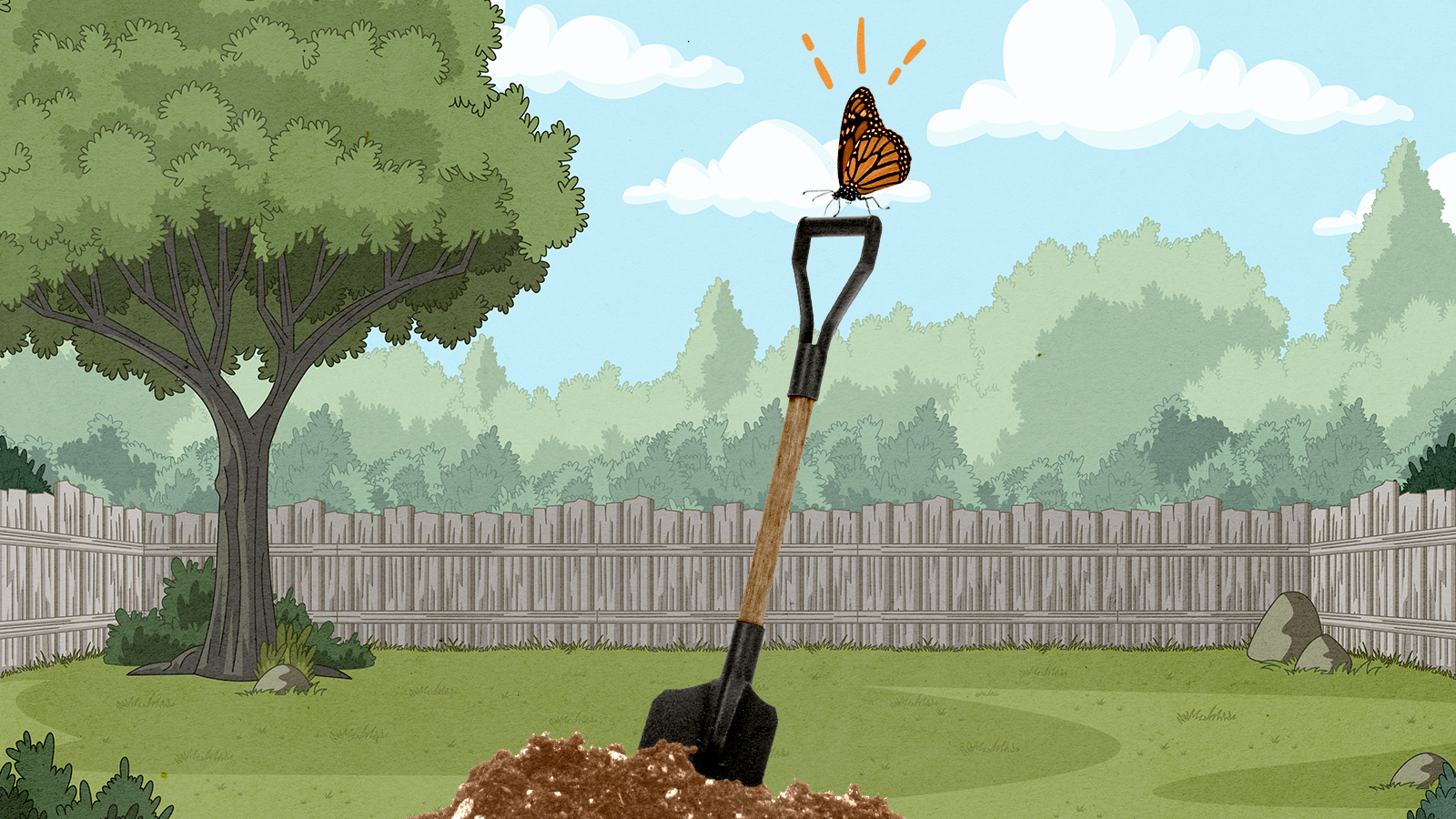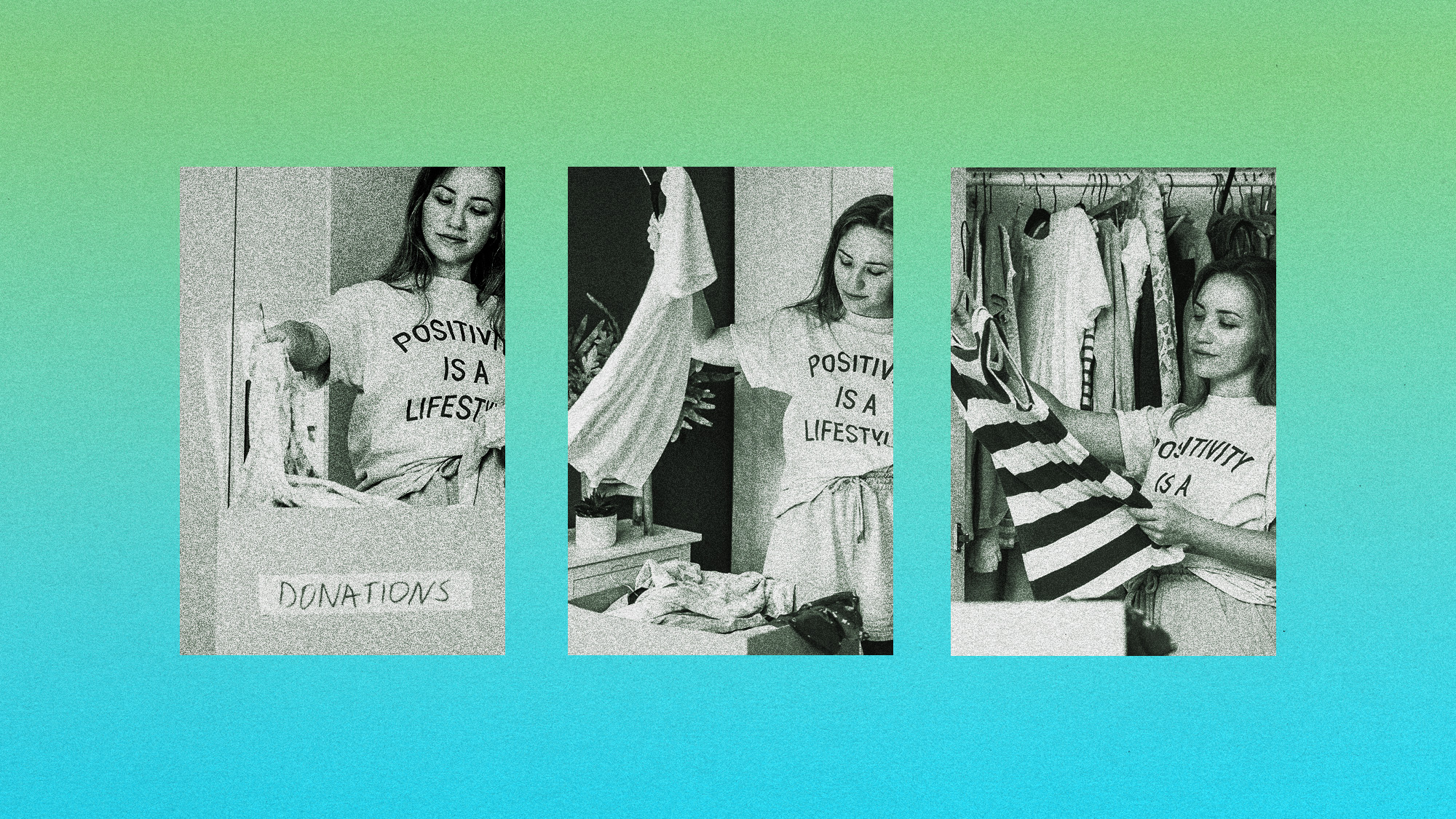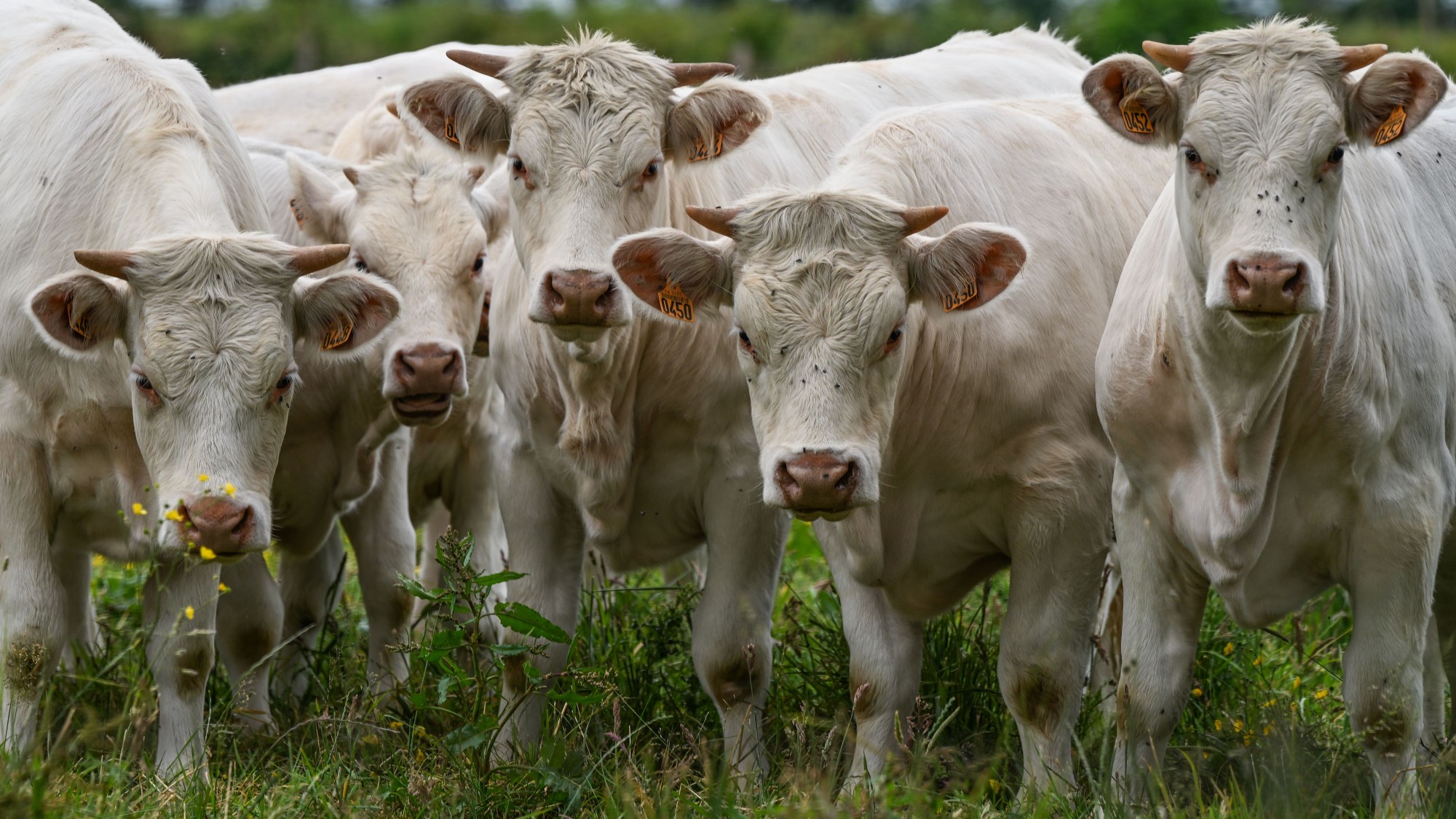Getting started with sustainable landscaping
Want to save the butterflies and bees? Start with your own backyard.


Want to make your yard a welcoming place for birds and insects, or looking to cut back on watering? Consider going green, embracing native plants, and investing in sustainable landscaping. Here's everything you need to know:
What is sustainable landscaping?
CalRecycle describes sustainable landscaping as "the practice of using multiple strategies to create an environmentally friendly and climate appropriate landscape" that "provides immediate benefits to local communities, while also protecting the environment and providing nourishment for birds, bees, and wildlife." This type of landscaping conserves water, improves soil health, reduces yard maintenance time, and creates habitat. One example is xeriscaping — the practice of using slow-growing and drought-tolerant plants in landscaping to conserve water and reduce the amount of yard waste.
Why is it important to use native plants in my yard?
To be considered a native plant, it has to occur "naturally in a particular region, ecosystem, or habitat without human introduction," the National Wildlife Federation says. Native plants flourish in the soil and weather in their native region and have formed symbiotic relationships with local wildlife, making them essential to preserving biodiversity. As Audobon explains, research from entomologist Doug Tallamy found that native oak trees can host more than 500 species of caterpillars, while gingkos — trees often used in landscaping that are native to Asia — can only support five species of caterpillars. You can use the National Wildlife Federation's native plant finder to determine the best plants for your garden.
The Week
Escape your echo chamber. Get the facts behind the news, plus analysis from multiple perspectives.

Sign up for The Week's Free Newsletters
From our morning news briefing to a weekly Good News Newsletter, get the best of The Week delivered directly to your inbox.
From our morning news briefing to a weekly Good News Newsletter, get the best of The Week delivered directly to your inbox.
With monarch butterflies now endangered, what I can plant to help them?
Turn your yard into a butterfly sanctuary by planting milkweeds that are native to the area. Female monarchs lay their eggs on these plants, and their flowers also provide nectar for butterflies and bees. Milkweeds are native to most of the continental United States, with the exception of western Washington and northwestern Oregon.
What about bees — how can I attract them to my yard?
Bees are drawn to most flowering plants, University of Minnesota Extension master gardener Jennifer Knutson says, particularly those that have blue and yellow flowers (they also are attracted to purple, white, and pink). So the bees don't have to worry about finding nectar and pollen, make sure to choose native plants that flower during different times of the season. Bees flock to gardens with at least 10 species of flowering plants, Knutson says, so plant a variety in close proximity to each other.
To ensure the bees have access to water, fill a shallow birdbath with stones and a small amount of water. Bees can land on the stones and drink without worrying about drowning. Knutson says if you don't have a birdbath, fill a large saucer with a quarter inch of sand, add some stones, and put enough water in so it rises a quarter inch about the sand. Mosquitos breed in standing water, so change the water out at least twice a week.
What are some easy ways to save water in my yard?
Replace your lawn with low-growing ground cover plants or try an herbal lawn, which is more drought tolerant and won't require a lot of mowing — this is also helpful in combating the air pollution caused by outdoor, gasoline-powered equipment. If you go this route, enhance the area with permeable paver stones, which allow water to flow down into the ground (as opposed to pavers made of concrete, which collect water that pools or becomes runoff). You can also purchase rain barrels that collect rainwater, which can be used later to water plants in your garden. If you just can't get rid of your lawn yet, allow it to go dormant during the summer, Better Homes & Gardens suggests, and don't water it.
A free daily email with the biggest news stories of the day – and the best features from TheWeek.com
Shifting away from traditional grass and sprinkler systems to native plants and drip watering systems really does make a difference. Over the course of nine years, Susanne Jett, a landscape designer in Santa Monica, California, gathered data from two gardens and found the one with a lawn and sprinklers used 703,813 gallons of water, while the other one with low-water native plants and a drip irrigation system only used 130,438 gallons of water, while also providing habitat for birds and insects.
Catherine Garcia has worked as a senior writer at The Week since 2014. Her writing and reporting have appeared in Entertainment Weekly, The New York Times, Wirecutter, NBC News and "The Book of Jezebel," among others. She's a graduate of the University of Redlands and the Columbia University Graduate School of Journalism.
-
 Political cartoons for January 4
Political cartoons for January 4Cartoons Sunday's political cartoons include a resolution to learn a new language, and new names in Hades and on battleships
-
 The ultimate films of 2025 by genre
The ultimate films of 2025 by genreThe Week Recommends From comedies to thrillers, documentaries to animations, 2025 featured some unforgettable film moments
-
 Political cartoons for January 3
Political cartoons for January 3Cartoons Saturday's political cartoons include citizen journalists, self-reflective AI, and Donald Trump's transparency
-
 Let these comedians help you laugh your way through winter
Let these comedians help you laugh your way through winterThe Week Recommends Get some laughs from Nate Bargatze, Josh Johnson and more
-
 5 tips for decluttering to get you through spring cleaning and beyond
5 tips for decluttering to get you through spring cleaning and beyondThe Week Recommends Organizing your space does not have to be quite so stressful
-
 10 upcoming albums to stream in the hazy spring
10 upcoming albums to stream in the hazy springThe Week Recommends Ring in the end of the cold weather with some new music
-
 10 concert tours to see this spring
10 concert tours to see this springThe Week Recommends As winter comes to an end, check out a variety of live performances
-
 Meghan Markle's new Netflix show and the media backlash
Meghan Markle's new Netflix show and the media backlashTalking Point With Love, Megan offers fresh insights into her 'mind-bogglingly exclusive lifestyle' in California
-
 The dark side of salmon farming
The dark side of salmon farmingIn the Spotlight Scottish salmon is the UK's biggest global food export, but concern is growing over record-high death rates, escapes and environmental impact
-
 Bovaer: the new dairy additive prompting boycotts and conspiracy theories
Bovaer: the new dairy additive prompting boycotts and conspiracy theoriesIn The Spotlight Manufacturer says it wants to reduce methane emissions from cows but social media criticism has grown
-
 Despite the pandemic and environmental alarm, the cruise industry is soaring
Despite the pandemic and environmental alarm, the cruise industry is soaringIn the Spotlight Royal Caribbean, Carnival and Norwegian all went into 2024 with record high bookings
